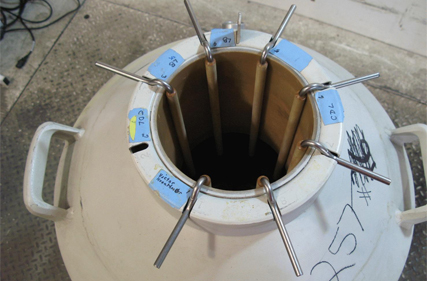
The most common program for commercial producers is a Fixed Time AL (FTAI) program.
The high cost of bulls, strong cattle prices and good seasonal conditions are driving many commercial producers to consider the option of Artificial Insemination (AI).
An AI program is also a great way to accelerate genetic gain through sourcing superior, proven genetics that may otherwise be inaccessible. A successful AI program requires preparation and good management, with producers who maintain cattle in good condition routinely obtaining the best results.
Here are some things to consider leading up to an AI program.
Semen selection
The most important thing to consider in the lead up to each mating season is your breeding objective. Set a clear and realistic objective at least 3 months prior to mating. Select semen from bulls with EBV’s that will help achieve your breeding objective and is within your budget. Using a combination of proven and young sires to mitigate risk and accelerate genetic gain is advised. There are multiple Artificial Breeding and Herd Improvement companies throughout the country that provide both domestically and internationally sourced semen. Make sure to order well in advance as there is often delays with freight etc.
Female Selection
The next key aspect of an AI program is identifying what females to use. If this is your first time using a commercial AI programme, it is frequently best (and simplest) to start by with joining heifers. Although pregnancy rates from a heifer program are generally 5% lower than cows, they will have the best genetics out of the mob while having the added benefit of no calves at foot. Heifers should be sufficiently matured, weighing 65% of their mature body weight at the start of the breeding program.
Semen selection
The most important thing to consider in the lead up to each mating season is your breeding objective. Set a clear and realistic objective at least 3 months prior to mating. Select semen from bulls with EBV’s that will help achieve your breeding objective and is within your budget. Using a combination of proven and young sires to mitigate risk and accelerate genetic gain is advised. There are multiple Artificial Breeding and Herd Improvement companies throughout the country that provide both domestically and internationally sourced semen. Make sure to order well in advance as there is often delays with freight etc.
Female Selection
The next key aspect of an AI program is identifying what females to use. If this is your first time using a commercial AI programme, it is frequently best (and simplest) to start by with joining heifers. Although pregnancy rates from a heifer program are generally 5% lower than cows, they will have the best genetics out of the mob while having the added benefit of no calves at foot. Heifers should be sufficiently matured, weighing 65% of their mature body weight at the start of the breeding program.
The optimum BCS is 3.5, with nutrition leading up to mating often being the key to a good result. Cattle need to be on a rising plane of nutrition 3 months prior and for about 6 weeks after AI to ensure good conception rates.
It takes approximately 70 days to lift animals one full body condition score; hence the importance of starting early and supplementing if pasture digestibility falls below 65%. Ensure that all cattle selected for AI are fully vaccinated. Consult your local Vets to see what they recommend for your herd.
AI Protocol
There are multiple different AI procedures ranging from relatively simple to complex depend on producer, resources and experience. I’d suggest discussing with your chosen vet/technician as to what method best suits you.
AI Protocol
There are multiple different AI procedures ranging from relatively simple to complex depend on producer, resources and experience. I’d suggest discussing with your chosen vet/technician as to what method best suits you.
The most common program for commercial producers is a Fixed Time AL (FTAI) program. All females to be AI’d are synchronised so that they are inseminated on the same day, aiming for the majority of the herd to ovulate within a 12 hour window after the time of AI. FTAI involves synchronising the animals in your herd using exogenous (injection or insertion/implantation of CIDR) hormones to be artificially mated over a controlled timeframe, thus being an efficient use of the vet/ technician’s time.
Make sure to book the program in your calendar well in advance – timing is critical to achieve optimal results. FTAI also has the added benefit of shortened breeding and calving seasons, reduced incidence of post-partum anoestrus, improved fertility and a more uniform line of calves. A FTAI will require adequate cattle yards and a cattle crush for insemination. To distinguish between AI and bull bred pregnancies at pregnancy scanning, wait approximately 10 days to turn in back up bulls after AI.
The key to a successful result comes down to preparation, planning and attention to detail. AI provides cost effective access to elite or unique genetics from sires that are not available on farm, therefore providing the opportunity to rapidly increase the rate of genetic gain within your herd.
-Henry Hickson, NextGen Agri
